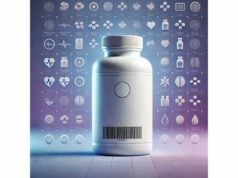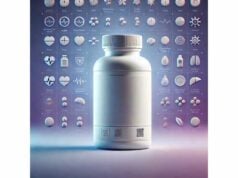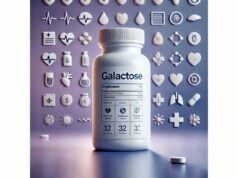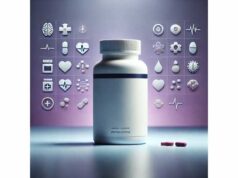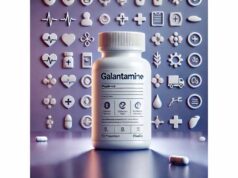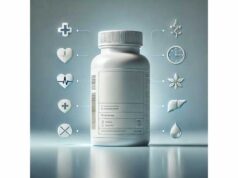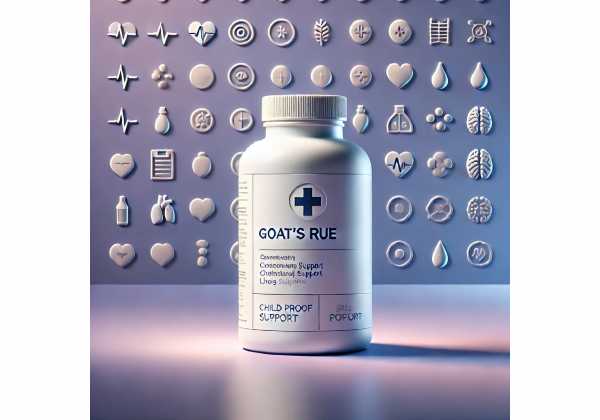
Goat’s rue (Galega officinalis) is a traditional European herb used for two main reasons today: supporting milk supply during breastfeeding and assisting metabolic balance. Its leaves and flowering tops contain guanidine derivatives—most notably galegine—that can lower blood glucose in laboratory settings. Modern interest also stems from history: research on goat’s rue guided the eventual development of metformin, a first-line diabetes drug. Yet tradition and chemistry do not automatically equal proven clinical benefit. Evidence for goat’s rue as a galactagogue is mixed and often confounded by multi-herb blends; evidence for direct glucose control in humans is limited. This guide separates what is known from what is hoped, shows practical ways people use the herb, and flags safety issues such as hypoglycemia risk, drug interactions, and product quality. If you choose to try goat’s rue, do so with realistic expectations, a thoughtful plan, and medical input when appropriate.
Key Insights
- May support milk production for some, but high-quality trials are scarce and results often come from multi-herb blends, not goat’s rue alone.
- Contains galegine and related compounds with hypoglycemic activity; monitor closely if you have diabetes or take glucose-lowering drugs.
- Practical trial: 2–4 weeks using labeled doses; historical preparations include a 5% infusion 15 mL three times daily or proprietary blends taken once daily.
- Avoid during pregnancy and in confirmed milk-protein or herb allergies; use caution with anticoagulants and antidiabetic medicines.
- Stop and seek care for symptoms of hypoglycemia (sweating, tremor, confusion) or any unusual reactions in parent or infant.
Table of Contents
- What is goat’s rue?
- Does goat’s rue work?
- How to use goat’s rue day to day
- Dosage and timing examples
- Safety and who should avoid
- Evidence and quality summary
What is goat’s rue?
Goat’s rue is a perennial in the pea family with a long record in European folk medicine. The aerial parts—leaves and flowering tops—are used to make teas, tinctures, and standardized capsules. Two features make the herb distinctive.
1) Phytochemistry with metabolic potential. Goat’s rue contains guanidine derivatives (galegine and 4-hydroxygalegine), flavonols (e.g., quercetin glycosides), hydroxycinnamic acid esters, and quinazoline alkaloids. Guanidine compounds can lower blood glucose in animals and cell models, and the plant’s chemistry can trap reactive carbonyls like methylglyoxal in vitro—mechanisms relevant to vascular complications of diabetes. These laboratory effects explain the herb’s reputation for glycemic support, though human trials remain limited.
2) A historical link to modern medicine. Early 20th-century work on goat’s rue’s guanidines inspired the synthesis of biguanides, culminating decades later in metformin. This lineage is often cited to market goat’s rue. It’s helpful context, but it does not prove that the herb itself duplicates metformin’s benefits or safety profile in real patients.
Forms you’ll see:
- Dried herb/tea. Infusions are made from the aerial parts. Taste is mildly bitter, slightly green.
- Tincture or liquid extract. Hydroalcoholic preparations, often labeled 1:5 to 1:2 herb\:solvent.
- Capsules. Ground plant or standardized extract; labels vary in herb equivalence and may be combined with other botanicals (e.g., fenugreek, fennel, milk thistle) in “lactation support” blends.
Primary reasons people use goat’s rue today
- Breastfeeding support. As a galactagogue, often as part of a multi-herb tea or capsule blend. Evidence quality is inconsistent and effects vary person-to-person.
- Metabolic support. Herbalists sometimes use goat’s rue in protocols for insulin resistance or early dysglycemia. Here, mechanistic plausibility outpaces direct clinical proof; anyone with diabetes should involve their clinician because of hypoglycemia risk.
What goat’s rue is not. It’s not a substitute for skilled lactation help, adequate milk removal, or a doctor-prescribed diabetes plan. It’s a supportive option that might help some users—best approached with careful dosing, monitoring, and an exit strategy if it doesn’t clearly help.
Does goat’s rue work?
Breastfeeding and milk supply. Historically, goat’s rue is among the most cited herbal galactagogues. Modern data fall into three buckets:
- Older, uncontrolled studies reported sizable milk-output increases with goat’s rue extracts. However, these lacked randomization, blinding, and robust measurement, so they cannot establish efficacy.
- Randomized trials with multi-ingredient products (e.g., teas or capsules combining goat’s rue with fenugreek, fennel, or silymarin) have shown higher early milk volumes or faster infant weight regain in some settings. Because multiple herbs were used, benefits cannot be attributed to goat’s rue alone.
- Systematic reviews of galactagogues conclude that overall evidence is mixed and often low quality, with heterogeneity in populations, dosing, and outcome measures. The consistent message across professional guidelines is to optimize milk removal first; consider galactagogues only after addressing latch, feeding frequency, and medical contributors.
What this means in practice. Some parents notice a modest boost—especially in the early postpartum period or when pumping for preterm infants—while others see no change. If you try goat’s rue, set a tight trial window (e.g., 2–4 weeks) with a clear target (e.g., +60–120 mL/day pumped output or improved weight gain paired with clinical follow-up). If there’s no measurable gain, discontinue and refocus on technique, schedule, and underlying issues.
Metabolic effects. Laboratory studies show glucose-lowering and antioxidant actions and methylglyoxal-trapping by goat’s rue constituents. Animal data suggest hypoglycemic activity and protection against some diabetes-related tissue changes. However, robust, modern human trials of goat’s rue itself for blood-glucose control are limited. In short: plausible mechanisms, insufficient direct clinical proof. If you have diabetes or prediabetes and are curious, discuss with your clinician—especially if you use insulin or sulfonylureas, which can interact to cause low blood sugar.
Who tends to benefit (when benefits are seen)
- Breastfeeding parents with suboptimal milk removal already corrected (good latch, frequent feeds/pumps) who still need a short-term boost, particularly in the first weeks or when exclusively pumping for preterm infants.
- Individuals experimenting with metabolic support under supervision, where small, careful trials monitor fasting/after-meal glucose and symptoms closely.
Reasonable expectations
- Magnitude: If a response occurs, it is typically modest—not a substitute for fundamentals.
- Timing: Some users report changes in 3–7 days; others need 10–14 days. No clear benefit by two weeks usually predicts non-response.
Bottom line: goat’s rue can help some users—especially within structured lactation plans—but evidence is mixed, and benefits (when present) are modest and individualized.
How to use goat’s rue day to day
Start with fundamentals. For lactation, always address milk removal first: effective latch, frequent feeds or pumping (8–12 times/day early on), and hands-on techniques. For metabolic goals, confirm your current plan with your clinician, set testing points (fasting and 1–2 hours after meals), and know your hypoglycemia protocol.
Choosing a form
- Tea/infusion: A classic way to test tolerance. Some traditional regimens use a 5% infusion, sipped several times daily. Taste is herbal-bitter; a squeeze of lemon can help.
- Tincture/liquid extract: Flexible dosing in milliliters. Useful if swallowing capsules is difficult or you want fine-tuned titration.
- Capsules: Most convenient. Products vary widely in herb equivalence; blends often pair goat’s rue with fenugreek, fennel, or milk thistle.
Structuring a trial (lactation)
- Define your outcome. Examples: +60–120 mL/day pumped milk; baby’s weight crossing back toward birth weight by day 10–14; fewer supplement top-ups measured by your care team.
- Pick a window. 2–4 weeks is typical. Begin only after a lactation consultant has addressed technique and schedule.
- Dose consistently. Follow the label for your chosen product; split doses (morning/afternoon/evening) to maintain steady exposure.
- Pair with pumping. Take the herb 30–60 minutes before a pumping session to align perceived “let-down support” with mechanical milk removal.
- Track and decide. Keep a simple diary: doses, pumping volumes, infant diapers, weight checks. If there’s no objective improvement by two weeks, stop.
Structuring a trial (metabolic)
- Involve your clinician if you use insulin, sulfonylureas, or other glucose-lowering drugs.
- Start low. Use the lower end of labeled dosing; recheck fasting and post-meal glucose after 3–7 days.
- Avoid stacking with other new supplements—introduce one change at a time to know what helps or harms.
- Stop for any hypoglycemia symptoms or if readings trend lower than your safe range.
Combining with other supports
- Breastfeeding: Evidence is stronger for skilled support and frequent milk removal than for any herb. Consider non-herbal tactics first (skin-to-skin, power pumping, hands-on compression).
- Metabolic: Diet quality, sleep, and activity are the big levers. Herbs, if used, are adjunctive.
When to avoid a trial
- Uncontrolled thyroid disease, significant organ illness, or complex medication regimens without medical oversight.
- Pregnancy (insufficient safety data).
- History of reactions to herbal blends used in lactation teas.
Use goat’s rue as a tool—not a crutch—within a plan you can measure. If it helps, the benefit should be apparent within two weeks; if not, save your time and money.
Dosage and timing examples
There is no single, universally accepted clinical dose for goat’s rue. Traditional and commercial patterns offer a reasonable starting framework that you can tailor with a clinician or lactation consultant.
Traditional preparations and study patterns
- Aqueous infusion: Historically, small volumes of a 5% infusion have been taken three times daily (for example, 15 mL per dose). This reflects traditional practice rather than modern, high-quality clinical trials.
- Proprietary blends: In some randomized studies involving mothers of preterm infants, a once-daily 5 g sachet of a combination product (containing silymarin-phosphatidylserine with goat’s rue) was used for about 3–4 weeks. Because this includes other active ingredients, it cannot define a goat’s rue–only dose.
- Historical herb equivalence: Pharmacognosy texts have cited ~4 g/day of dried herb as a human exposure far below animal-toxicity thresholds. This is context, not a personalized prescription.
Practical dosing plans (examples, not medical orders)
- Lactation—tea approach (simple):
- Brew an infusion as directed on the product. Sip ½–1 cup, two to three times daily for 2 weeks, aligning doses before pumping. Continue only if you see objective gains.
- Lactation—capsule approach (label-guided):
- If a single-herb capsule indicates ~500–1000 mg herb equivalent per serving, take one serving twice daily with meals for 2–3 weeks. For blends, follow the manufacturer’s serving size and keep other galactagogues constant to isolate effects.
- Metabolic—cautious trial (with clinician):
- Begin at the lowest labeled dose once daily for 3–7 days, check fasting and post-meal glucose, then consider twice daily if tolerated. Discontinue at the first sign of hypoglycemia or if it complicates your medication titration.
Timing tips
- With food vs empty stomach: Taking with food can reduce GI upset and blunt any rapid glucose-lowering sensations.
- Split dosing: Morning and mid-afternoon often work well. Avoid late-evening first doses if you’re monitoring for hypoglycemia overnight.
- Duration: If it helps, most people keep it short-term (weeks), reassessing regularly. Long-term daily use should only occur with clinician oversight.
When to reduce or stop
- Symptoms of low blood sugar (sweating, shakiness, confusion).
- New bruising or bleeding if you also use anticoagulants or antiplatelet drugs.
- Infant or parent shows unusual symptoms (excessive sleepiness, poor feeding, vomiting).
- No measurable benefit by 14 days.
Because dosing varies by product and purpose, anchor your plan to measurable outcomes and safety monitoring. When in doubt, choose the lowest effective dose for the shortest necessary time.
Safety and who should avoid
Common reactions
- Most users tolerate goat’s rue at labeled doses. Occasional reports include mild GI upset, headache, or a “jittery/weak” sensation—often attributable to blood-glucose fluctuations.
Serious concerns (uncommon but important)
- Hypoglycemia risk. Galegine and related guanidines can lower blood glucose. Risk rises if you also use insulin or sulfonylureas. Symptoms include sweating, tremor, hunger, dizziness, confusion, or palpitations. Stop the herb and follow your hypoglycemia plan if symptoms occur.
- Bleeding risk. Laboratory and small clinical investigations suggest platelet-aggregation inhibition. Caution if you take warfarin, DOACs (e.g., apixaban), antiplatelets (e.g., clopidogrel), or have bleeding disorders.
- Allergic reactions. As with any botanical, hypersensitivity is possible. Stop for rash, swelling, or breathing difficulty and seek care.
Special populations
- Pregnancy: Avoid due to insufficient safety data.
- Breastfeeding: If used, do so after optimizing milk removal and only for a short, measured trial. Discontinue for infant symptoms (lethargy, poor feeding, vomiting). Multi-herb teas can confound cause if reactions occur.
- Diabetes or hypoglycemia history: Use only with clinician involvement; check readings more frequently when starting or adjusting dose.
- Surgery: Because of potential bleeding effects, discuss stopping 1–2 weeks before elective procedures.
- Kidney or liver disease: Use extra caution; consult your clinician before any herbal trial.
Interactions to consider
- Glucose-lowering drugs: Additive effects with insulin, sulfonylureas, or other antihyperglycemics.
- Anticoagulants/antiplatelets: Possible increased bleeding tendency.
- Polyherb blends: Lactation teas often combine multiple galactagogues; if benefits or side effects appear, it’s hard to identify the cause.
Product quality
- Choose brands that disclose plant part, extraction ratio, herb equivalence per capsule, and test for contaminants. For athletes, prefer products certified free of banned substances. Avoid products making drug-like claims.
Overdose and toxicity
- Livestock poisonings occur at high intakes of fresh plant due to galegine. Human supplement doses are far lower, but “more” is not better—especially if you also take glucose-lowering medicines.
Bottom line: goat’s rue is generally well tolerated at labeled doses but requires extra caution around blood sugar and bleeding risk. Short, measured trials with clear stop rules are the safest path.
Evidence and quality summary
What the evidence supports
- Galactagogue use: Traditional use is extensive. Some modern trials—mostly with multi-herb formulations—report higher early milk volumes or faster return to birth weight. Attributing these effects to goat’s rue alone is not possible, and overall evidence quality is low to moderate with methodological limits (small samples, inconsistent outcomes, inadequate blinding).
- Guideline perspective: Professional guidance emphasizes first fixing milk-removal mechanics; galactagogues may be considered for short, monitored trials when fundamentals are in place.
- Mechanisms: Goat’s rue provides guanidine derivatives that lower glucose in preclinical models and antioxidant/carbonyl-trapping actions that could, in theory, protect against glycation damage. These are mechanistic signals, not clinical proof in humans.
What remains uncertain
- Goat’s rue alone vs blends. Most positive lactation data involve blends with fenugreek, fennel, or silymarin. Direct RCTs of goat’s rue monotherapy are scarce.
- Best dose and duration. Doses vary across teas, tinctures, and capsules. Historical dosing and proprietary blends cannot be translated one-to-one into a standardized goat’s rue dose.
- Metabolic outcomes in people. Human trials directly testing goat’s rue for glycemic control are limited and heterogeneous.
How to choose a product (checklist)
- Identity: Galega officinalis, aerial parts specified.
- Transparency: Extraction ratio or herb equivalence per dose, not just “proprietary blend.”
- Testing: Third-party testing for contaminants; athlete-safe certification if relevant.
- Simplicity: If you want to test goat’s rue specifically, start with single-herb products rather than blends; add blends only if you later decide to broaden your trial.
A practical synthesis
- For lactation, goat’s rue can be one tool inside a structured plan led by a lactation consultant. Expect modest, individualized effects and evaluate objectively within 2–4 weeks.
- For metabolic goals, the herb’s mechanisms are intriguing, but clinical evidence is not strong; involve your clinician, especially with existing therapies, and monitor for hypoglycemia.
- In all cases, prioritize fundamentals—mechanical milk removal, nutrition, sleep, stress management, and medication adherence—before and while testing any herb.
References
- Goat’s Rue – Drugs and Lactation Database (LactMed®) – NCBI Bookshelf 2024 (Database Monograph)
- Oral galactagogues (natural therapies or drugs) for increasing breast milk production in mothers of non-hospitalised term infants 2020 (Systematic Review)
- ABM Clinical Protocol #9: Use of Galactogogues in Initiating or Augmenting Maternal Milk Production, Second Revision 2018 2018 (Guideline)
- Metformin: historical overview 2017 (Review)
- Investigation of the Phytochemical Composition, Antioxidant Activity, and Methylglyoxal Trapping Effect of Galega officinalis L. Herb In Vitro 2020 (In Vitro Study)
Disclaimer
This article is for general information and education. It is not medical advice and does not replace consultation with a qualified healthcare professional who can evaluate your individual circumstances. Do not start, stop, or change any medication or supplement—especially if you are pregnant, breastfeeding, have a medical condition, or take prescription drugs—without professional guidance.
If you found this helpful, please consider sharing it on Facebook, X (formerly Twitter), or your preferred platform, and follow us for future evidence-based guides. Your support helps us continue creating clear, trustworthy health content.

